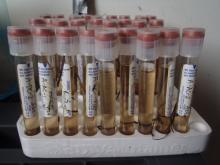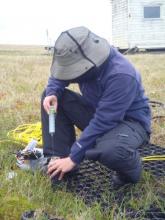Update
PolarConnect Event
Cristina Solis and her team held a great webinar for the junior docents at the Cabrillo Marine Aquarium. If you would like to view the archive of the event, explaining the science of their research project, feel free to check out the PolarConnect Archives.
What Are They Doing?

To collect their data, the research team combined research methods from biology, ecology, and biotechnology. In 2012, the team performed experiments to determine the role that bacterial processes play in the production of carbon dioxide, methane, and other gases from peat soils. They collected data in the field including gas flux measurements, soil cores, thaw depth, water table depth, pH, and dissolved oxygen content. Additionally, they monitored bacterial respiration and conducted related lab experiments.
Where Are They?

Latest Journals
Lars Angenent is an Associate Professor in the Department of Biological and Environmental Engineering at Cornell University. His research interests include the conversion of organic waste into bioenergy, the development of biosensors, photobioreactors and bioaerosols, and the creation of biocomputing devices that are based on microbial electrochemical technologies. Learn more about Dr. Angenent's research at his faculty webpage [http://angenent.bee.cornell.edu/DrLarsAngenent.html]

Elliot Friedman is a PhD candidate in Dr. Angenent's Lab at Cornell University. His research focuses on engineering applications of microbial electrochemical technologies. He designed and constructed the biosensors being used in the Arctic.

David Lipson is an Associate Professor in the Department of Biology at San Diego State University. His research interests include soil microbial ecology, plant-microbe interactions, and linking microbial diversity to ecosystem processes.

Ted Raab is a Senior Investigator in the Carnegie Institute of Science at Stanford University. His research interests include plant physiological ecology, analytical chemistry and spectroscopy, synchrotron-based imaging, and cryosols.





